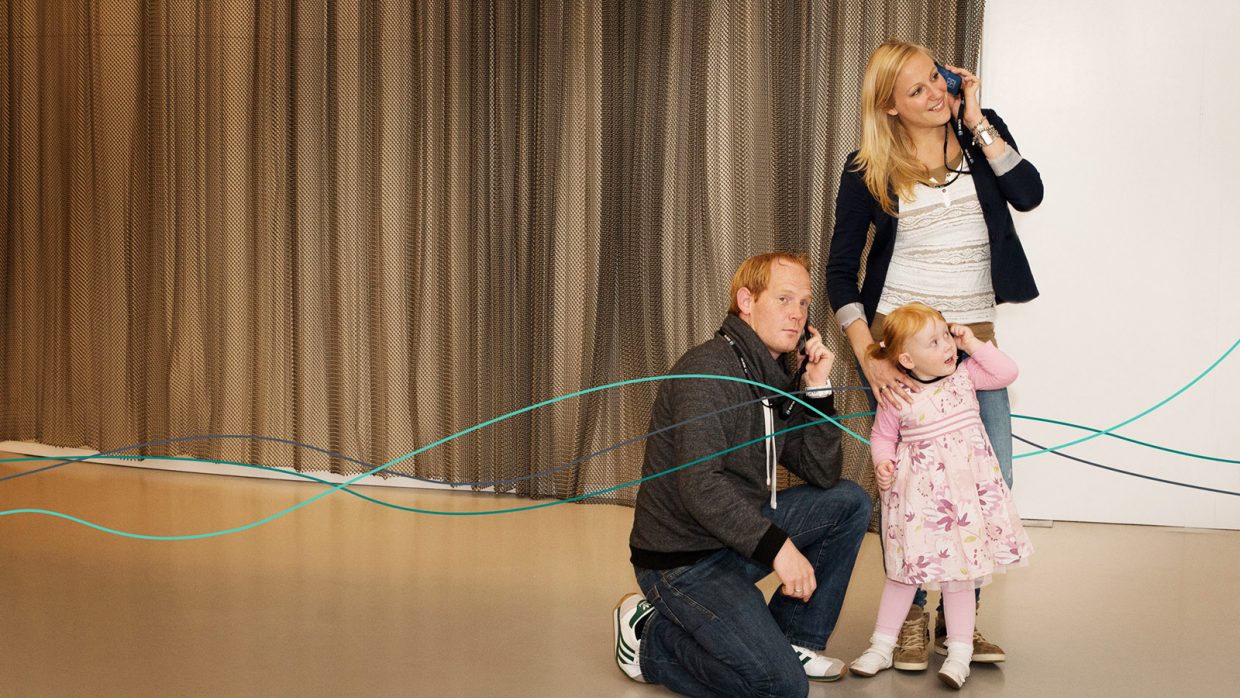Since its opening in 2004, the USS Midway Museum has embraced audio guides. Its price of admission covers an audio tour, through which the San Diego attraction shares stories surrounding its eponymous naval carrier and collection of aircraft. However, the museum’s audio tour hardware — bulky headsets with numbered keypads — proved cumbersome for visitors, while building these tours weren’t just expensive, but hard to maintain.
That is, until the USS Midway Museum implemented Guide-ID. The audio tour platform offered the venue a straightforward audio solution, including the handy Podcatcher, audio handsets sleekly designed to be easy to use and non-distracting. Instead of entering numbers onto a keypad, visitors simply have to point the Podcatcher at an exhibit to play audio, with tours available in a number of languages including Chinese, French, German, and Japanese. Since adopting Guide-ID, the venue has reduced the cost of audio tour production and more importantly, increased use of its audio guides by some 15 percent.
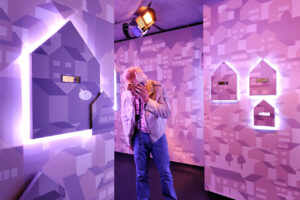
Guide-ID’s Podcatcher audio guides have been implemented by museums including the USS Midway, Royal Delft Museum, and KODE Art Museum. Image: Guide-ID
Founded in the Netherlands in 2008, Guide-ID provides cultural organizations with the essential tools — from its Tour Editor backend to the Podcatcher, the world’s easiest audio guide — to enrich their audio storytelling. “One of our core values is to keep things simple,” says CEO and Founder Frits Polman. “We don’t want visitors to get distracted by a screen or a difficult user interface. Guides should be intuitive and the same goes for the online editor.”
Guide-ID’s Tour Editor enables organizations to create tours in a cinch and at low cost. In its latest version, a text-to-speech feature further allows museums to upload an audio tour in multiple languages, cutting down on translation costs while making it easier to edit and go live with a guide. The Tirpitz Museum in Denmark, for example, was able to bring its entire audio tour production process in-house. With the Tour Editor, the institution independently created and edited content for multiple exhibitions, picked tour languages, and published tours — building an interactive experience that’s now hitting a 94 percent visitor satisfaction rate.
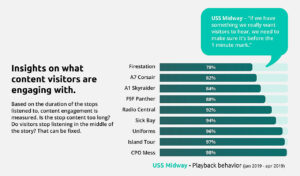
The Podcatcher Portal offers analytics that can help cultural venues better plan audio tours and exhibitions. Image: Playback behavior on USS Midway’s audio tours / Guide-ID
Vitally, the Podcatcher Portal also provides analytics into how visitors are consuming and using the audio guides. The USS Midway has been able to pinpoint data including tour attendance, which tours are most popular, and which languages are the most used. These insights can in turn shape future (or existing) tours. For example, if visitors don’t complete audio tracks, maybe the tracks are too long; if visitors often turn up a volume at a particular stop, perhaps a track’s levels are too low. “Curators and content creators can see how the actual content is used by the actual visitors,” says Polman. “So there’s a feedback loop.”
With the Podcatcher, venues can also integrate interactive elements such as quizzes and treasure hunts into their audio tours. As the Amsterdam Museum has found, this interactivity can further translate into personalization as each Podcatcher comes with a unique ID number, allowing it to be linked to a visitor’s name or email address. After embracing Guide-ID’s system, the institution now has an audio guide pick-up rate of 67 percent, while the data collected through Podcatcher will help inform its future exhibitions.
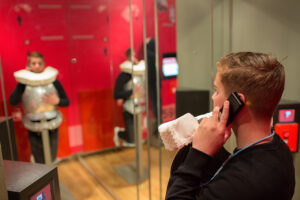
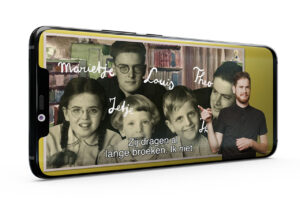
The Amsterdam Museum (top) has leveraged the Podcatcher’s interactive elements to build personalization into its audio tours, while the Dutch Resistance Museum (bottom) has used the guide’s inclusive features to create offerings such as a sign language tour. Images: Guide-ID
Not least, central to Guide-ID’s proposition is accessibility — a value that the platform shares with the Dutch Resistance Museum. Since 2018, the Amsterdam institution has been focused on creating an inclusive experience for all visitors with the help of Guide-ID. This work has included ensuring audio tours are accessible for blind or visually impaired audiences by affixing tactile stickers to the buttons on Podcatchers and adding instructions in audio tracks to guide them through the galleries. A sign language tour for deaf visitors was also built, facilitated by Guide-ID adding video functionality support to its Podcatcher Portal.
As you read this, Guide-ID is developing its next generation of Podcatchers, incorporating new features like an indoor positioning system, which is set to roll out later this year. The new model doesn’t just mark the company’s continued growth in the audio tour sector, but ensures its customers, too, have the opportunity to grow and enhance their offerings. “We want to tell stories in all countries in the world by 2030,” Polman says. “That’s our vision.”
To learn more about Guide-ID and Podcatcher, visit guide-id.com. Interested organizations can head to guide-id/online-toureditor to start a trial version and experience the Tour Editor.

